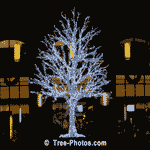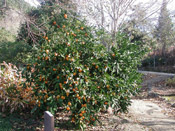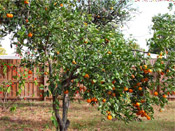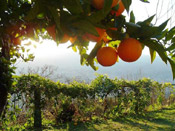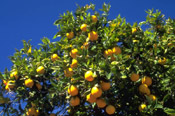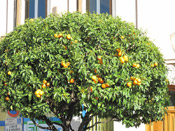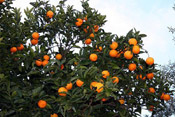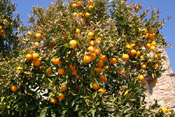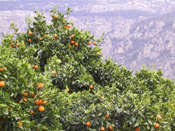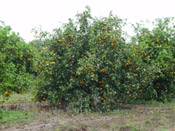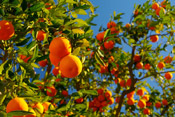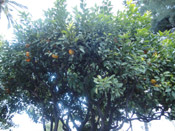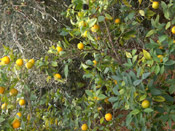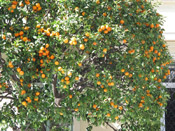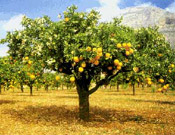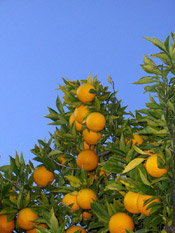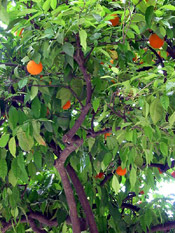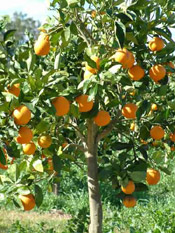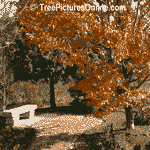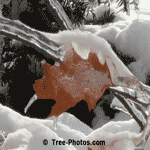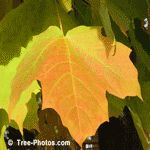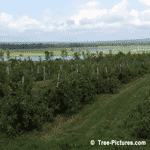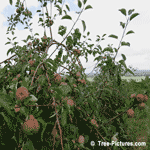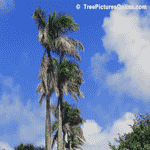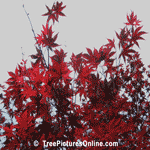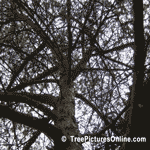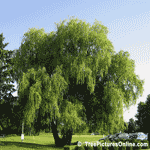Orange Tree Pictures
Welcome to our orange tree category.
On this page you will find lots of nice pictures of orange trees.
You will also find a lot of wonderful information on orange trees, including information about the orange tree species, planting information, and much more.
This is valuable and useful information that can help you to learn more about the orange tree.
Orange Tree Photos
To view each orange tree photo in full size, just click on the orange tree pictures you like.
Enjoy these pictures of orange trees.
Orange Tree Pictures
Orange Tree Scientific Name: Citrus sinensis
Types of Orange Trees, Different Orange Tree Species
- Bitter Orange Tree, used for beverages, liqueurs, candies, marmalade and sauces.
- Cara Cara Orange Tree, type of navel orange, pinkish red interior
- Mandarin Orange Tree, originated in Asia, includes clementines and satsumas
- Moro Orange Tree, Blood Oranges
- Navel Orange Tree, seedless oranges, best orange for eating
- Sunkist Orange Tree, high quality orange from California and Arizona
- Valencia Orange Tree, thin skinned oranges with few seeds
Orange Tree Facts
Here is some detailed information on the orange tree.
It is the most commonly grown tree fruit in the world.
The orange is a hybrid of ancient cultivated origin, possibly between pomelo (Citrus maxima) and mandarin (Citrus reticulata). It is an evergreen flowering tree generally growing to 9 to 10 m in height (although very old speciments have reached 15 m). The leaves are arranged alternately, are ovate in shape with crenulate margins and are 4 to 10 cm long. The orange fruit is a hesperidium, a type of berry.
Two areas dominate orange growth and especially production of orange juice. The southeast coast of Brazil, surrounding Sao Paulo, produces more oranges than the next three countries combined. As almost 99% of the fruit from this region is processed for export, it is the overwhelming giant in worldwide orange juice production.
Mid-south Florida produces about half as many oranges as Brazil; however, the bulk of its orange juice is sold domestically. The Indian River area of Florida is known for the high quality of its juice, which is often sold fresh in the US. Because of the low yield and high quality of Indian River oranges, their juice is often blended with juice from other regions.
Production of orange juice between these two makes up roughly 85 percent of the world market. Brazil exports 99 percent of its production, while 90 percent of Florida's production is consumed in the US.
Orange juice is traded internationally in the form of frozen concentrated orange juice to reduce the volume used, so that storage and transportation costs are lower.
Propagation of orange trees is deceptively difficult, because hardy edible oranges are not generally grown from seed. Cultivars that produce good quality fruit are highly susceptible to root diseases. Grafted trees also begin bearing fruit many years earlier than trees reproduced by seed.
Oranges can be grown outdoors in warmer climates, and indoors in cooler climates. Like most citrus plants, oranges will not do well unless kept between 15.5 degrees celsius to minus 29 degrees celsius (60 degrees fahrenheit to minus 85 degrees fahrenheit). Orange trees grown from the seeds of a store-bought fruit may not produce fruit, and any fruit that is produced may be different than the parent fruit, due to modern techniques of hybridization. To grow the seed of a store-bought orange, one must not let the seed dry out (an approach used for many citrus plants). One method is to put the seeds between the halves of a damp paper towel until they germinate, and then plant them. Many just plant them straight into the soil, making sure to water them regularly. Oranges require a huge amount of water and the citrus industry in the Middle East is a contributing factor to the desiccation of the region.
Oranges are sensitive to frost, and a common treatment to prevent frost damage when sub-freezing temperatures are expected, is to spray the trees with water, since as long as unfrozen water is turning to ice on the trees' branches, the ice that has formed stays just at the freezing point, giving protection even if air temperatures have dropped far lower.
Canopy-shaking mechanical harvesters are increasingly being used in Florida to harvest process oranges. Current canopy shaker machines use a series of six- to seven-foot long tines to shake the tree canopy at a relatively constant shaking stroke and frequency.
The first major pest attacking orange trees in the United States was the cottony cushion scale (Icerya purchasi), which was imported from Australia to California in 1868. Within 20 years, it had wiped out the citrus industry around Los Angeles and seriously impacted orange growth throughout California.
Oranges are widely grown in warm climates worldwide, and the flavors of oranges vary from sweet to sour. The fruit is commonly peeled and eaten fresh, or squeezed for its juice. It has a thick bitter rind that is usually discarded, but can be processed into animal feed by removing water, using pressure and heat. It is also used in certain recipes as flavoring or a garnish. The outer-most layer of the rind can be grated or thinly veneered with a tool called a zester, to produce orange zest. Zest is popular in cooking because it contains the oil glands and has a strong flavor similar to the fleshy inner part of the orange. The white part of the rind, called the pericarp or albedo and including the pith, is a source of pectin and has nearly the same amount of vitamin C as the flesh.
Orange juice is one of the commodities traded on the New York Board of Trade. Brazil is the largest producer of orange juice in the world, followed by the USA. It is made by squeezing the fruit on a special instrument called a "juicer" or a "squeezer." The juice is collected in a small tray underneath. This is mainly done in the home, and in industry is done on a much larger scale.
Frozen orange juice concentrate is made from freshly squeezed and filtered orange juice.
Sweet orange oil is a by-product of the juice industry produced by pressing the peel. It is used as a flavoring of food and drink and for its fragrance in perfume and aromatherapy. Sweet orange oil consists of about 90% d-Limonene, a solvent used in various household chemicals, such as to condition wooden furniture, and along with other citrus oils in grease removal and as a hand-cleansing agent. It is an efficient cleaning agent which is promoted as being environmentally friendly and preferable to petroleum distillates.
Thank you for visiting our Orange Tree Pictures, please come back soon for some more great tree pictures!
Impressive Tree Pictures
Collection of Impressive Tree Images
Trees: Recent Tree Photos, Pics & Images |
||
Palm Tree Pictures |
Beech Trees |
Palm Trees |
Oak Tree Gallery |
Christmas Trees |
Maple Trees |
Apple Tree Photo Gallery |
Apple Tree Images |
Palm Trees Gallery |
Japanese Maple Trees |
Pine Tree Gallery |
Willow Trees Category |
Tree wallpaper images can make beautiful backgrounds on your computer`s desktop. See our tree wallpaper photographs link in the left tree categories.
Thank you for visiting our Tree Pictures at TreePicture Online.com, please come back soon for more great tree photos!
Pictures Sites
Fireplace Pictures -
Tree Pictures -
Gazebo Pictures -
Symbols & Their Meanings
Resume Samples -
Church Pictures -
Manufactured Home Pictures
Natural Log Siding -
Shadow Puppets -
Caribbean Islands
Play Touch Games -
Waterfall Pictures
Make Hot Pictures - Job Application Forms
![]()


